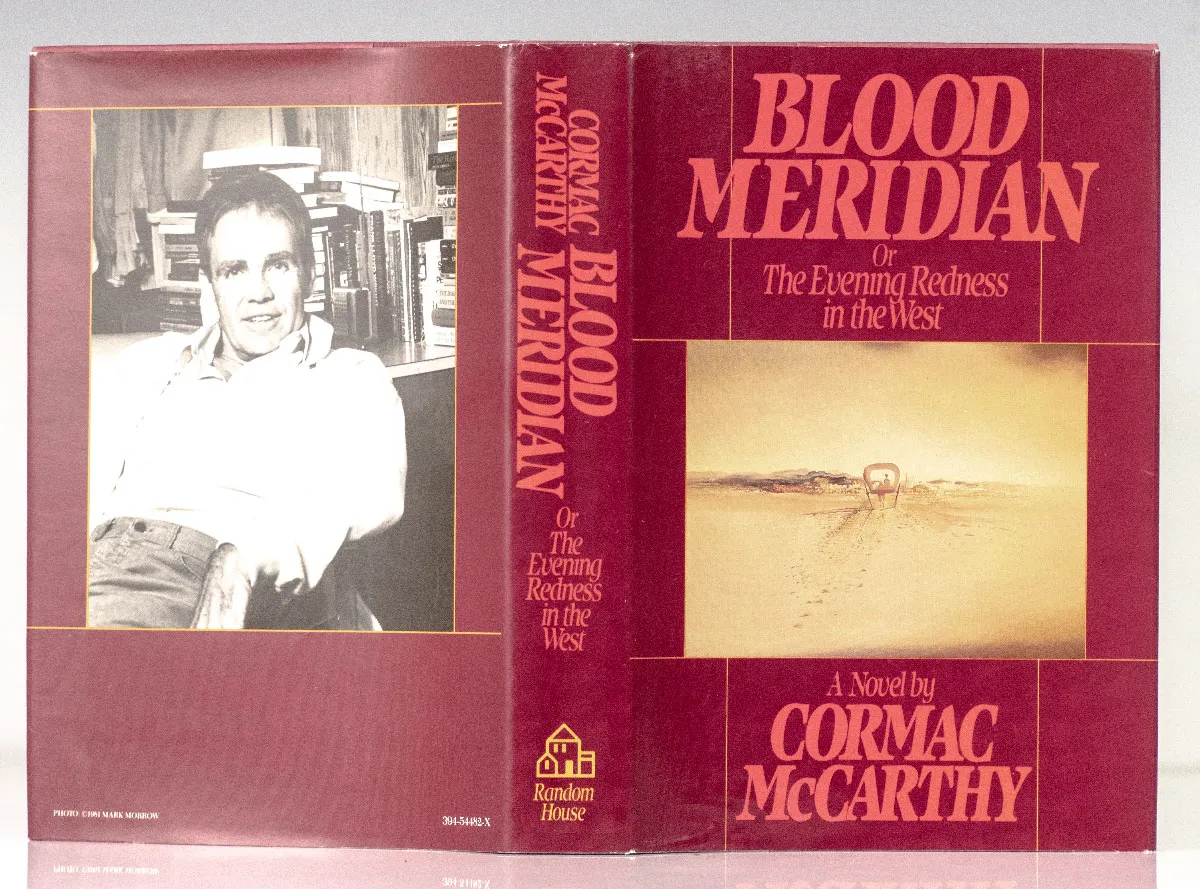
Cormac McCarthy’s Blood Meridian or The Evening Redness in the West stands as a cornerstone of American literature, renowned for its stark portrayal of violence and human brutality. Set in the unforgiving landscape of the American West, the novel delves deep into the philosophical and historical contexts of violence, examining its pervasive impact on individuals and societies. The narrative weaves a grim tapestry of moral ambiguity and existential chaos, forcing readers to confront the unsettling realities of human nature.
This analysis will explore the central themes of violence in Blood Meridian, focusing on how McCarthy uses literary devices, historical context, and philosophical undertones to create a profound exploration of human brutality. Keywords such as “Blood Meridian violence themes,” “Cormac McCarthy Blood Meridian,” and “Themes in Blood Meridian” will guide our discussion as we unravel the novel’s complex layers.
What Makes Violence Central to the Narrative of Blood Meridian?
Violence is not just a theme in Blood Meridian; it is the narrative’s lifeblood. McCarthy situates his story in the American West during the mid-19th century, a period rife with brutal conflicts, territorial expansion, and moral disintegration. Through relentless depictions of carnage, McCarthy questions whether violence is an inherent aspect of human nature or a byproduct of historical and cultural circumstances.
The novel illustrates violence as a force of nature, omnipresent and inescapable, shaping the destinies of its characters. The story’s pervasive brutality mirrors the chaotic and lawless environment of the American frontier, blurring the lines between survival and savagery.
Historical Context of Violence in the American West
The setting of Blood Meridian—the borderlands between the United States and Mexico—reflects a historically violent period marked by colonial expansion, Native American conflicts, and economic exploitation. McCarthy’s attention to detail lends authenticity to the narrative, grounding its philosophical themes in real-world atrocities.
Depictions of Human Brutality in Literature
McCarthy’s Blood Meridian stands apart in its unflinching portrayal of human brutality. While many novels romanticize the American West, McCarthy strips away the veneer of heroism, presenting violence as a raw and unrelenting force. This depiction aligns with other literary works that examine the darker aspects of human nature.
How Does Cormac McCarthy Portray Violence in Blood Meridian?
McCarthy’s portrayal of violence in Blood Meridian is both explicit and philosophical. His prose is dense with imagery, capturing the visceral and psychological impact of violence on his characters and the landscape itself. Through his stark narrative style, McCarthy challenges readers to grapple with the inevitability and pervasiveness of brutality.
Symbolism and Literary Devices in Blood Meridian
McCarthy employs powerful symbolism to underscore the themes of violence. The character of The Judge epitomizes chaos, power, and the philosophical justification of violence, serving as a central figure in the narrative’s exploration of morality and survival. Nature itself is portrayed as both a witness to and participant in the novel’s relentless brutality.
The Philosophy of Violence in the Narrative
Violence in Blood Meridian transcends the physical; it becomes a philosophical inquiry into the nature of evil and the human condition. McCarthy raises existential questions about morality, power, and the cyclical nature of violence, leaving readers to ponder its inevitability.
Themes of Moral Ambiguity and Survival in Blood Meridian
One of the novel’s most compelling aspects is its exploration of moral ambiguity. In Blood Meridian, survival often necessitates acts of brutality, challenging conventional notions of good and evil. The lack of clear moral distinctions in McCarthy’s characters forces readers to confront uncomfortable truths about the human capacity for violence.
How Does Violence Shape the Characters in Blood Meridian?
The characters in Blood Meridian are deeply affected by the violence they witness and perpetuate. The protagonist, referred to simply as “The Kid,” embodies the struggle between innocence and savagery. Meanwhile, The Judge serves as a symbolic figure of unrelenting violence and philosophical detachment, shaping the narrative’s darker themes.
Why Is Blood Meridian Considered a Landmark in American Literature?
Blood Meridian has earned its place as a landmark in American literature for its unflinching examination of violence and its philosophical depth. The novel deconstructs the myths of the American West, presenting a grim yet profound narrative that continues to influence literary studies.
FAQs
H3: What is the main theme of Blood Meridian?
The main theme of Blood Meridian is violence, explored through its historical, philosophical, and symbolic dimensions.
H3: How does Blood Meridian depict human brutality?
Through vivid imagery and morally complex characters, McCarthy portrays brutality as an inescapable aspect of human existence.
H3: Who is The Judge in Blood Meridian?
The Judge represents chaos, power, and the philosophical justification of violence, serving as a central figure in the novel’s exploration of morality.
H3: Why is Blood Meridian considered a difficult read?
Its challenging prose, graphic depictions of violence, and philosophical depth demand careful attention and interpretation.
H3: How does Blood Meridian compare to other Western novels?
Unlike traditional Westerns, Blood Meridian deconstructs the genre, presenting a bleak and philosophical perspective on the American West.
Conclusion
Blood Meridian remains a monumental work of literature, forcing readers to confront the darker aspects of human nature and history. Through its exploration of violence, McCarthy offers a narrative that is both unsettling and thought-provoking, cementing its place in the literary canon.







